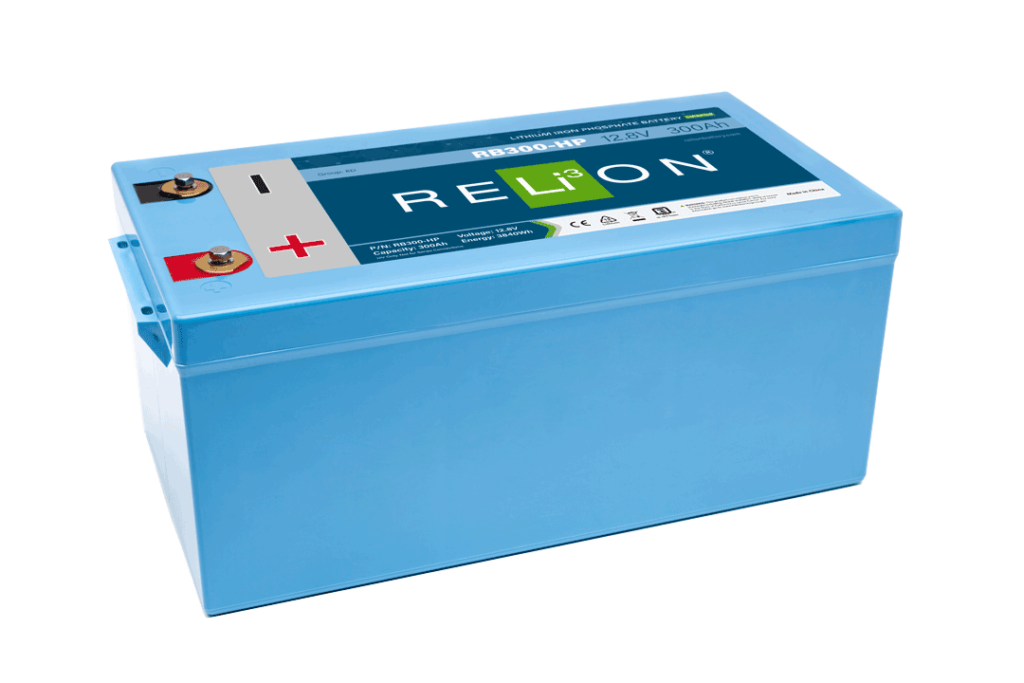In recent years, Lithium Iron Phosphate (LiFePO4) batteries have revolutionized energy storage solutions, particularly in the marine industry. As the demand for reliable, efficient, and environmentally friendly power sources grows, LiFePO4 batteries have emerged as a leading choice. Among the various specifications available, the 12V 300Ah LiFePO4 battery stands out for its exceptional performance, making it ideal for marine applications. This article explores the benefits, technical considerations, installation practices, and potential of 12V 300Ah LiFePO4 batteries in maximizing marine performance.
Advantages of LiFePO4 Batteries in Marine Applications
Lightweight and Compact Design
One of the most significant advantages of LiFePO4 batteries is their lightweight and compact design. In the marine environment, where space and weight are at a premium, these batteries offer a substantial improvement over traditional lead-acid or AGM batteries. A 12V 300Ah LiFePO4 battery typically weighs around 60 to 80 pounds, significantly lighter than its lead-acid counterparts. This reduction in weight can improve vessel performance, fuel efficiency, and overall stability, particularly in smaller boats where every pound counts.
High Energy Density and Efficiency
LiFePO4 batteries are known for their high energy density, meaning they can store more energy per unit of volume compared to other battery technologies. This characteristic is crucial for marine applications, where the need for efficient energy storage is paramount. The 12V 300Ah battery can deliver consistent power over extended periods, making it ideal for running essential systems such as navigation, communication, and onboard appliances. Additionally, these batteries have a high charge and discharge efficiency, which means less energy is lost during these processes, resulting in more usable power for your vessel.
Long Lifespan and Cycle Life
Another key advantage of LiFePO4 batteries is their impressive lifespan and cycle life. Unlike lead-acid batteries, which may require replacement every few years, a well-maintained LiFePO4 battery can last over a decade, even with regular use. This longevity is attributed to the battery’s ability to withstand thousands of charge-discharge cycles without significant degradation. For marine applications, where reliability is critical, the long lifespan of a 12V 300Ah LiFePO4 battery translates to reduced maintenance costs and less frequent replacements, providing long-term financial benefits.
Safety Features
Safety is paramount in marine environments, and LiFePO4 batteries excel in this regard. These batteries are thermally stable and resistant to overheating, reducing the risk of fires or explosions. Additionally, they do not emit harmful gases during operation, making them safer for enclosed spaces on vessels. Most LiFePO4 batteries, including the 12V 300Ah models, come equipped with an integrated Battery Management System (BMS). The BMS monitors and protects the battery from overcharging, over-discharging, and short circuits, ensuring safe and reliable operation even in challenging marine conditions.
Technical Considerations for Marine Use
Voltage Consistency and Performance
One of the most critical technical considerations for marine applications is the consistency of voltage output. Marine electronics, propulsion systems, and other onboard equipment require a stable power supply to function correctly. The 12V 300Ah LiFePO4 battery provides a steady voltage output throughout its discharge cycle, ensuring that your equipment operates smoothly without the risk of power drops that could lead to malfunctions or damage.
Charging and Discharging Efficiency
In marine applications, where power sources may be limited or sporadic, the efficiency of charging and discharging is crucial. LiFePO4 batteries can be charged at a higher rate compared to traditional batteries, allowing them to reach full capacity more quickly. This fast charging capability is particularly beneficial in situations where shore power access is limited, or when using alternative energy sources like solar panels. Moreover, LiFePO4 batteries have a low self-discharge rate, meaning they retain their charge longer when not in use, making them ideal for seasonal or infrequent use.
Temperature Management
Marine environments can present a wide range of temperatures, from the heat of tropical waters to the cold of polar regions. LiFePO4 batteries are designed to perform well across a broad temperature range, but it’s essential to consider temperature management to maximize their lifespan and efficiency. While these batteries perform optimally at moderate temperatures, they can also function in colder climates, though at a reduced capacity. Ensuring proper ventilation and avoiding exposure to extreme temperatures will help maintain the battery’s performance and longevity.
Installation and Maintenance Best Practices
Proper Installation Techniques
Installing a 12V 300Ah LiFePO4 battery in a marine vessel requires careful planning and execution. First, it’s essential to secure the battery properly to prevent movement due to the vessel’s motion. Use sturdy, non-conductive materials for mounting, and ensure the battery is installed in a well-ventilated area, away from direct exposure to water or extreme temperatures. Additionally, it’s crucial to follow the manufacturer’s guidelines for wiring and connections to avoid potential issues such as voltage drops or electrical shorts.
Maintenance Tips
While LiFePO4 batteries are relatively low-maintenance compared to traditional batteries, regular checks are still necessary to ensure optimal performance. Inspect the battery terminals for corrosion or loose connections and clean them as needed. Monitor the battery’s state of charge regularly and recharge as necessary to prevent deep discharges, which can shorten the battery’s lifespan. The integrated BMS will provide valuable data on the battery’s health, including temperature, voltage, and charge cycles, allowing you to address any issues before they become problematic.
Integration with Marine Power Systems
When integrating a 12V 300Ah LiFePO4 battery with your marine vessel’s power system, compatibility is key. Ensure that the battery’s voltage and capacity align with your vessel’s requirements, and consider using an inverter if your system operates on AC power. For larger vessels or those with higher power demands, multiple LiFePO4 batteries can be connected in parallel to increase capacity. It’s also essential to use a charger designed specifically for LiFePO4 batteries to avoid overcharging and ensure a long lifespan.
Applications in Different Marine Scenarios
Recreational Boating
For recreational boaters, the 12V 300Ah LiFePO4 battery offers numerous advantages. Its lightweight design means less strain on smaller boats, leading to better performance and fuel efficiency. The high energy density allows boaters to power electronics, navigation systems, and onboard appliances for extended periods, making it ideal for day trips or weekend outings. Additionally, the battery’s safety features provide peace of mind, ensuring a worry-free experience on the water.
Commercial Marine Vessels
In commercial marine applications, such as fishing boats or ferries, reliability and efficiency are paramount. The 12V 300Ah LiFePO4 battery’s long lifespan and high cycle count reduce the need for frequent replacements, minimizing downtime and maintenance costs. These batteries can power essential systems such as navigation, communication, and refrigeration, ensuring smooth operations even during extended periods at sea. The fast charging capability also means less time spent at docks recharging, allowing for more time on the water. For a deeper understanding, explore this resource https://goldenmateenergy.com/products/12v-300ah-lifepo4-deep-cycle-lithium-battery.
Sailing and Long-Distance Voyages
For sailors and those embarking on long-distance voyages, the 12V 300Ah LiFePO4 battery is a game-changer. Its ability to deliver consistent power over extended periods is crucial for running navigation systems, autopilots, and other essential equipment. The battery’s high efficiency and low self-discharge rate make it ideal for off-grid scenarios, where reliable power is a necessity. Additionally, its lightweight design and compact size allow for more storage space for other essentials, such as food, water, and supplies.
Cost-Benefit Analysis
Initial Investment vs. Long-Term Savings
While the initial cost of a 12V 300Ah LiFePO4 battery may be higher than traditional batteries, the long-term savings make it a worthwhile investment. The extended lifespan, reduced maintenance, and improved efficiency of LiFePO4 batteries result in lower overall costs over time. Additionally, the reliability and safety of these batteries reduce the risk of costly repairs or replacements, providing further financial benefits.
Comparison with Alternative Battery Technologies
When compared to lead-acid, AGM, and other battery technologies, LiFePO4 batteries offer superior performance and longevity. Lead-acid batteries, while cheaper upfront, require frequent replacements and maintenance, leading to higher long-term costs. AGM batteries offer some improvements but still fall short in terms of lifespan and energy efficiency. In contrast, LiFePO4 batteries provide a better return on investment due to their durability, efficiency, and safety features.
Return on Investment (ROI)
The return on investment for a 12V 300Ah LiFePO4 battery is significant, particularly for those who use their vessels frequently or rely on them for commercial purposes. The reduced need for replacements, lower maintenance costs, and improved performance all contribute to a strong ROI, making these batteries a smart choice for marine applications.
Future Trends and Innovations
Emerging Technologies
As LiFePO4 battery technology continues to evolve, we can expect further improvements in energy density, charging efficiency, and overall performance. Advances in materials science and manufacturing processes will likely lead to even lighter and more compact batteries, making them even more attractive for marine applications.
Integration with Renewable Energy Sources
The integration of LiFePO4 batteries with renewable energy sources such as solar, wind, and hydro power is another promising trend. As more vessels adopt renewable energy solutions, LiFePO4 batteries will play a crucial role in storing and managing this energy, enabling more sustainable and eco-friendly marine operations.
Sustainability and Environmental Impact
LiFePO4 batteries are not only efficient but also environmentally friendly. Unlike lead-acid batteries, they do not contain harmful heavy metals and have a lower environmental impact over their lifecycle. As the marine industry moves towards more sustainable practices, LiFePO4 batteries will become increasingly important in reducing carbon footprints and promoting cleaner oceans.
Conclusion
The 12V 300Ah LiFePO4 battery is a powerful and versatile solution for marine applications. Its lightweight design, high energy density, long lifespan, and safety features make it ideal for a wide range of vessels, from recreational boats to commercial ships and long-distance cruisers. By understanding the technical considerations, installation practices, and potential applications, marine operators can maximize the performance and efficiency of their vessels, ensuring reliable power for years to come. As the industry continues to evolve, LiFePO4 batteries will remain at the forefront of marine energy solutions, driving innovation and sustainability in the years ahead.







